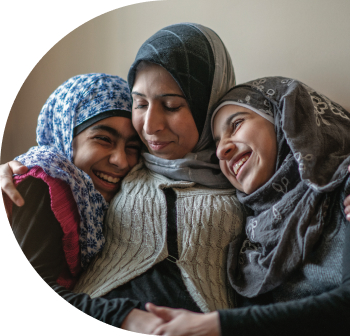
Strengthening Cause-of-Death Data Through CRVS Reporting
Civil registration and vital statistics (CRVS) systems are responsible for registering births, deaths, marriages, and divorces, and for issuing birth, death, marriage, and divorce certificates. Cause-of-death data typically rely on CRVS reporting, and without accurate and up-to-date gender data on causes of death, policymakers and development practitioners are unable to effectively implement health policies and programs that address the needs of women, girls and gender-diverse groups.
Both capacity building and technical assistance will need to be supported by strong health data governance frameworks to ensure quality and protect individuals.
Highlighting The Solutions
Integrating verbal autopsies into CRVS systems
A third of deaths worldwide lack cause-of-death information. Verbal autopsies can fill in the gaps by collecting information on age, gender, name (or pseudonym) of the deceased along with a description of the cause of death reported by nonprofessional caregivers. In recent years, a few sub-Saharan African countries integrated verbal autopsies in their CRVS systems. The 2019 Verbal and Social Autopsy Study in Nigeria was used to estimate causes and factors of childhood deaths and as a result, USAID developed policy recommendations to reduce these deaths. These verbal autopsies could be used to conduct further gender analysis and inform policy recommendations to increase girls’ access to health care and nutrition.
Standardizing femicide data
Standardizing femicide data improves the quality of cause-of-death data. The Latin America Open Data Initiative (ILDA) is leading a project to contextualize femicide and femicide data, while making a case for a common framework and definitions of this data in Latin America and the Caribbean. In Argentina, for example, ILDA led a workshop for provincial and national governments to coordinate and produce better femicide data. These efforts will improve understanding of gender-based violence in Argentina and prevent the misreporting of cause-of-death data as a whole.
Other health solutions and findings
Out of 142 solutions found in the inventory, there are 51 solutions that are relevant to health, where 35 of those solutions are solely focused on health and the remaining 16 solutions focus on multiple themes, including health. Solutions for closing the gaps in cause-of-death data are not the only solutions needed in the health sector. Other health solutions in the inventory include:
- Using helpline data to understand gender-based violence during COVID-19
- Using gender-disaggregated, gridded population datasets to understand women’s access to health facilities
- Training data journalists on CRVS and gender data use in health reporting
- Using WHO’s toolkit for strengthening population health systems to monitor the impact of the COVID-19 pandemic
What Will It Take to Scale Up Health Solutions?
Capacity building and technical assistance are key.
In the case of verbal autopsies, actors such as bilateral agencies and inter-governmental organizations provide essential financial support and training to conduct the verbal autopsies. In the case of femicide data, civil society organizations are integral to working with national governments on standardizing femicide data at both the subnational and national levels. Both capacity building and technical assistance will need to be supported by strong health data governance frameworks to ensure quality and protect individuals.

How Will Applying These Solutions Impact Gender Data?
The solutions associated with health would produce more data on cause-of-death, access to health care services, sexual and reproductive health and rights, child health, gender-based violence, and morbidity.
From the inventory, the solutions that address gender-based violence complement efforts to track Target 5.2 on eliminating violence against women and girls. The solutions that address child health and sexual and reproductive health and rights cover Targets 3.1 (maternal mortality) and 3.2 (child and newborn mortality), and 3.7 (sexual and reproductive health care services). The solutions associated with healthcare services and facilities align with Target 3.8 (access to quality healthcare services). The solutions that overlap with cause-of-death and morbidity overlap with the above-mentioned targets, along with Targets 3.3 (ending the epidemics of communicable diseases) and 3.4 (reducing mortality of noncommunicable diseases).
Beyond the SDGs, better gender data on health will address the 67th resolution at the World Health Assembly on strengthening health systems for addressing gender-based violence.
To access a full list of sources for the above, click here. To view the entire report, follow this link.
Close Gender Data Gaps
Explore more solutions that are practical and scalable across multiple development sectors.

